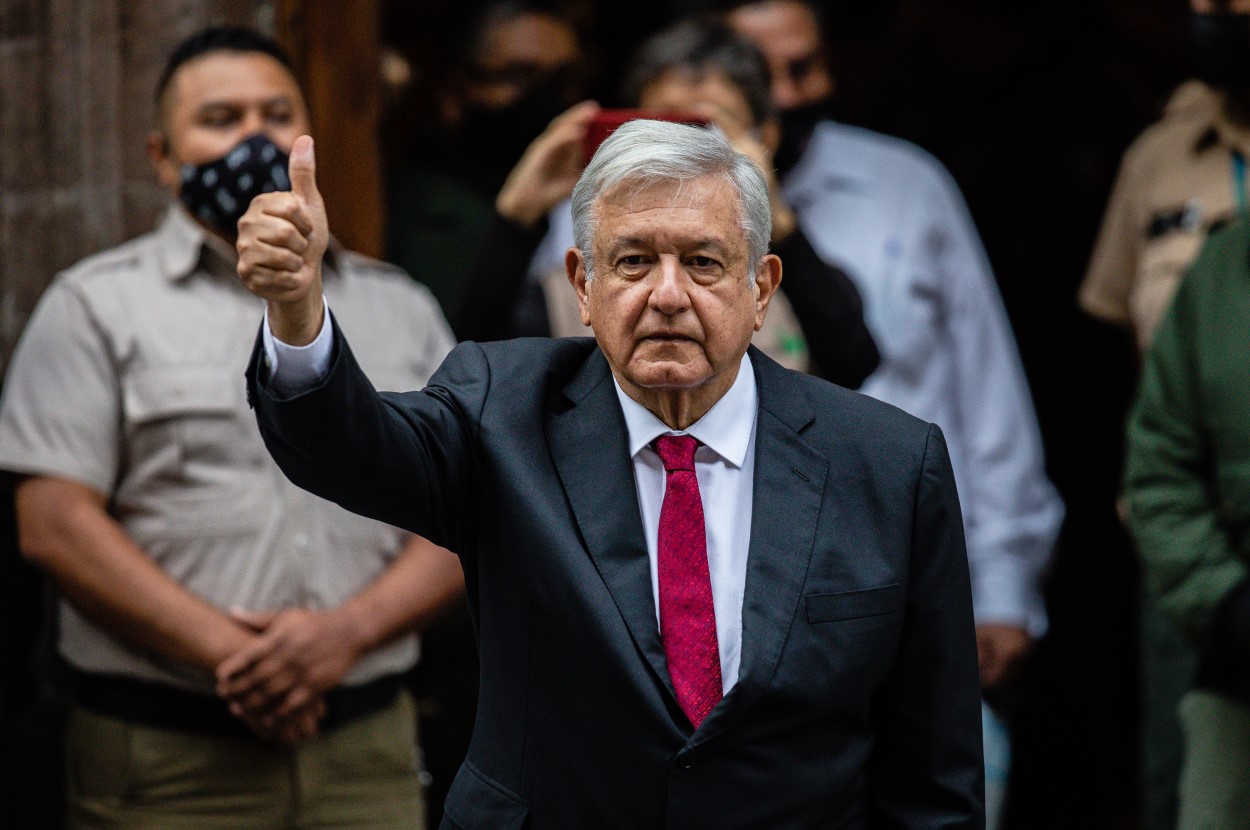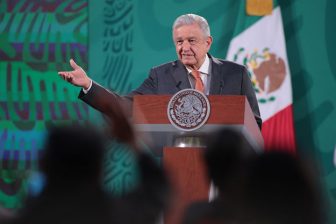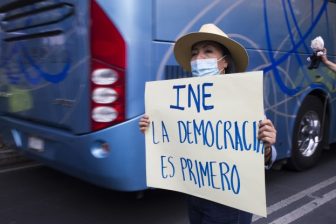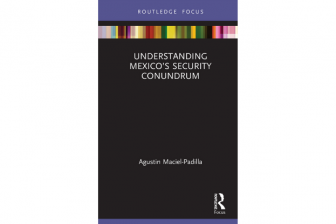In Mexico’s midterm elections on June 6, the opposition achieved the once unthinkable. By bringing together the major parties of the right (PAN), the center (PRI) and the left (PRD), it has extinguished the governing coalition’s supermajority, preventing it from making constitutional changes on its own authority.
But make no mistake: President Andrés Manuel López Obrador (AMLO) and his party, MORENA, still performed well. They won eleven out of the fifteen governorships that were up for grabs – twelve, counting one won by MORENA’s Green Party ally. In the lower house, MORENA itself will likely have more deputies than in 2018, up from 190 to as many as 203 on an initial count. Together with the Greens they retain a simple majority in both houses.
Surveying the new political geography in Mexico, a question arises. What will be the president’s aspirations for the rest of his mandate, which lasts until July 2024? Many had speculated that he might try to extend his mandate beyond the single six-year term provided in the constitution, but this possibility has been eliminated by the midterm results. So, what’s next?
The president offered some clues on June 10 in a meeting with key private sector representatives from the Mexican Business Council, an event itself significant given AMLO’s meetings with the group have become less frequent and given that he has referred to some in the group as his “adversaries”. These include increasing tariffs for energy producers, changes to the electoral system in the legislature, and the absorption of the Mexican National Guard by the Defense Ministry (SEDENA). Do these priorities signal more big changes for Mexico? On the contrary: They suggest AMLO’s most consequential reforms may be behind him.
Retreading old ground
It remains unclear what exactly AMLO meant when he called for an “increase of tariffs for generators of energy” in his meeting with business leaders, nor is it clear what additional measures he intends to take in this sector, which has been at the core of his anti-private sector policy. It is likely, however, that the proposal is related to a controversial bill he submitted to Congress last February aimed at rolling back the opening to private enterprise in the electricity sector established in a 1992 reform.
This measure seems likely to attract litigation initiated by those affected retroactively (and thus unlawfully), since it aims at revoking the generation permits of independent power producers (IPPs) and “reviewing” ongoing contracts between IPPs and the Federal Electricity Commission (CFE). This decision has been justified by the argument that some of the combined-cycle power suppliers are charging “excessive” rates. It is yet to be determined whether this new tariff-related action suggests an intent by AMLO to add energy price regulation to his previous bill.
At the heart of AMLO’s planned electoral reforms are what are called “plurinominals.” These legislators, elected via proportional representation, were introduced in the lower chamber in 1977 and in the upper chamber two decades later. When Jesús Reyes Heroles, interior minister under President López Portillo, envisaged their creation, he described them as “being able to capture the complex national ideological mosaic and give voice to those who think differently from the majority but are a part of the nation.” They make up 200 of the 500 deputies in the lower chamber and 32 senators out of 128 in the upper chamber. Parties win plurinominal representatives proportionally to the percentage of the overall vote they receive, in conjunction with regulations that seek to prevent overrepresentation. AMLO favors cutting their numbers. As with other concepts or projects that the current president dislikes, the idea is not to revisit and improve on the issue, but rather to eliminate the object of his discomfort. In this case, the main reason for doing so is supposedly budgetary, in consonance with the “republican austerity” that has become a trademark of his narrative.
Plurinominal representatives have been at the center of the political debate since their introduction. In a 2014 article in La Jornada, Soledad Loaeza responded to a proposal by the then-governing party, the PRI, to cut expenses by reducing the number of plurinominals by 100 in the lower chamber and 36 in the upper chamber. (MORENA senator Martí Batres’s 2019 proposal to cut plurinominals is similar to the earlier PRI proposal.) Loaeza argued in favor of maintaining the plurinominals while reducing other expenditures, such as official publicity, an area as pertinent now as then – in 2019 it accounted for more than 3.2 million pesos.
Discussion of the plurinominals should center not on their existence but rather on their significant reform in two areas: the introduction of padlocks restricting these seats from being moved from one party to another – since they are seats won by a specific party through the election – and clearer party rules and transparency in the construction of the national lists. These currently fail to represent the members of parties in a democratic way, rather only the balance of power within each party at the time of the electoral campaign.
As for the last of AMLO’s planned reforms, bringing the newly formed National Guard under the auspices of the Armed Forces is little more than a formality. Despite the drive from opposition parties and human rights associations to conceptually and legally demilitarize the National Guard after its creation in 2019, the president named an active-duty general as its head, eliminating any doubt that this new organization would be an intrinsic part of the Armed Forces both in strategic and operative terms. According to an investigation by Animal Político, out of the National Guard’s 90,000 members, 52,101 were from the Army, 10,149 from the Marines and 26,376 from the now-extinct Federal Police, as of July 2020. The military is already responsible for their recruitment and salaries. In terms of results, the creation of the National Guard has been far from sufficient to address violence and insecurity in Mexico in an effective way. Record rates of killings continue unabated since its formation.
None of the three priorities set forth by AMLO signal a dramatic or structural change in Mexico’s economy, politics or security. His signature constitutional and legal changes have already been made during the first part of his mandate. Among the most significant of these is the significant expansion of the catalog of crimes that merit pre-trial penalties, including imprisonment without a trial (prisión preventiva oficiosa), asset freezing and asset forfeiture. Many fail to apprehend in these reforms the creation of a state with enormous power and discretion. All this makes a strong case that the unquestionable winner of the midterms was AMLO – who remains far more strategic than many assume.









